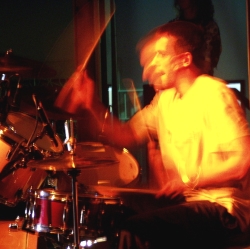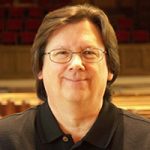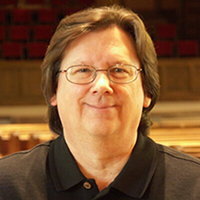I played keyboards in rock and roll bands for twelve years before I went back to school to get my music engineering degree from the University of Miami (a Bachelor of Music degree with a minor in electrical engineering).
I got saved just out of college, got my career started, and got married a few years later.
As a recording and sound reinforcement engineer since 1980, I still love rock and roll sounds. Especially drums. And in the studio, or in a concert setting in a large auditorium, loud, powerful rock and roll drum kits work great. Acoustic drum kits do not, however, work well in many church service settings.
The words “large auditorium” and “loud” are simply not reality for the great majority of churches in the world. Well, actually, the “loud” part probably is an unfortunate reality for many churches who desire to follow the current trend in praise and worship music, and attempt to use full rhythm sections including acoustic drums in small sanctuaries. Neither is our regular worship service intended to be a “concert,” with the usual sound pressure level that the term implies.
This pursuit has brought with it more than a few problems as musicians, music ministers and sound technicians alike have tried their best to blend the transitional sound with the church acoustical environment, not to mention visual aesthetics.
Trying to use an acoustic drum kit is one of the greater challenges, because an acoustic drum kit played appropriately for a contemporary style song is loud. There’s no getting around that. It can easily overpower the rest of the musicians, and especially the vocalists. So, the sound engineer attempts to create a musical blend by using sound reinforcement to add to the strength of those softer elements.
In so doing, the overall sound pressure level can reach well over 95 dB SPL, even 105 dB SPL or more! Now we’re facing the issues of being good stewards of our vessel (possibly ruining our own hearing, as well as the hearing of others in attendance), driving the intelligent people away from attending the service – and therefore the church – because they choose not to be part of such a loud environment, and so on.
As a sound engineer, achieving great sounds is a big part of my job. I’ll fight long and hard before I’ll compromise one fraction of that sound. But I’m also the guy who gets yelled at when the music in the worship service is too loud. Through years of experimentation and just plain fussing over it, I’ve found that a small compromise on everyone’s part can create an overwhelming improvement in the sound of a worship service, especially worship in a small (less than 1,000 seats) auditorium. Want to know what that is?
Just switch from acoustic drums to an electronic kit.
I mixed the house sound in a 4,000 seat church for eight years, and even we used electronic drums for every service. Whenever we tried to go back to an acoustic kit, the acoustic energy put out by the kit was so out of proportion to the rest of the mix of the instruments and vocals that all semblance of musical order and taste was thrown out the window. I could overcome it easily with the brute force of a large sound reinforcement system, but I’d also be dodging wigs and ladies hats as they flew past me from the sound wave that hit the front rows.
In addition to my work at that church, I’ve also mixed the house sound in over one hundred other churches, and I’ve worked with some really great drummers, so please trust me when I say that acoustic drum kits are a significant problem in nearly all church worship service settings.
There were a small handful of settings where it worked: One 1200 seat church had a totally enclosed drum “room” built into the stage with a Plexiglas front for visual communication. That worked great! Another 3500 seat church with a very high ceiling had a special drum gobo arrangement with very thick Plexiglas tops that were bent out over the drummer, basically capturing the kit sound right there. But there was also a 4000 seat church with a roughly 50 foot ceiling and such a live room that there was absolutely no way possible to use the acoustic kit – we had to use a totally electronic kit.
I can hear all the growls of disgust rising from the true percussionists the world over. But let’s talk reality for a moment. I can’t for the life of me understand why so many drummers in small churches still insist on playing acoustic kits. Do they think they are somehow going to single-handedly be the first one to defy God’s laws of physics!?! Wake up, guys! It’s not going to happen.




















